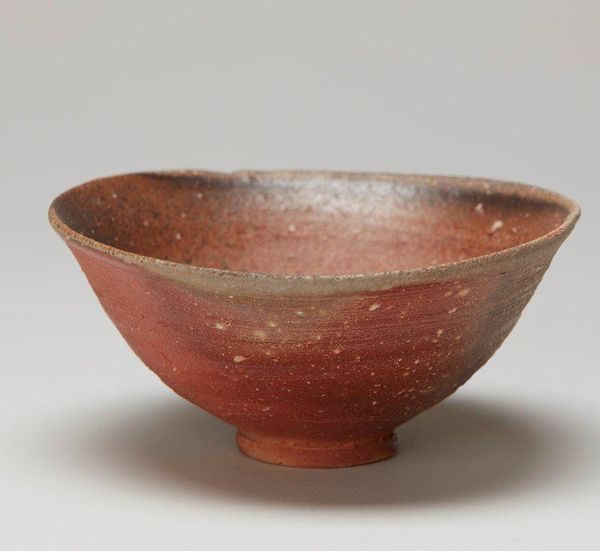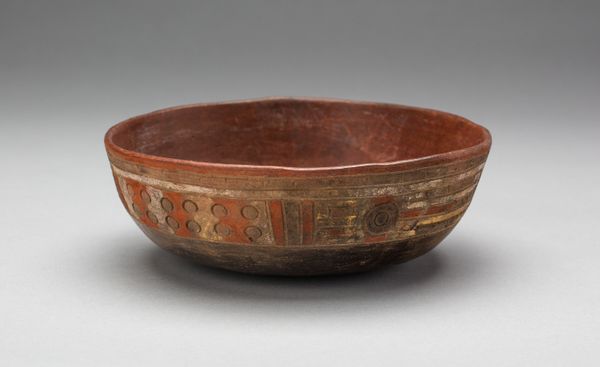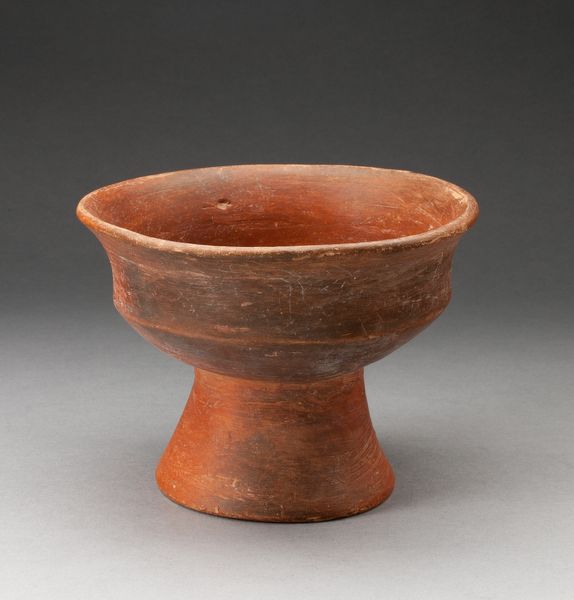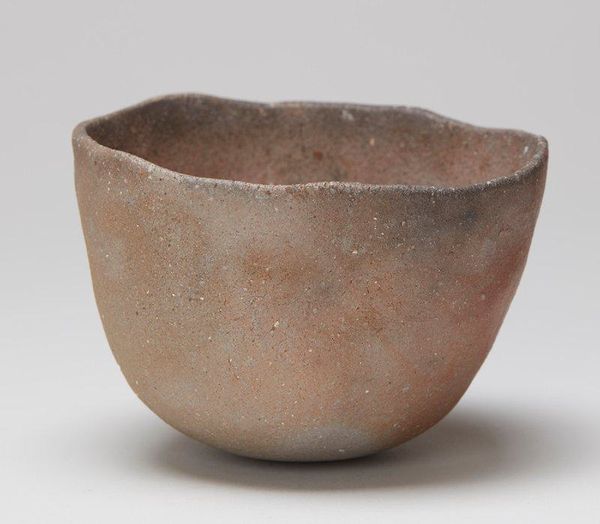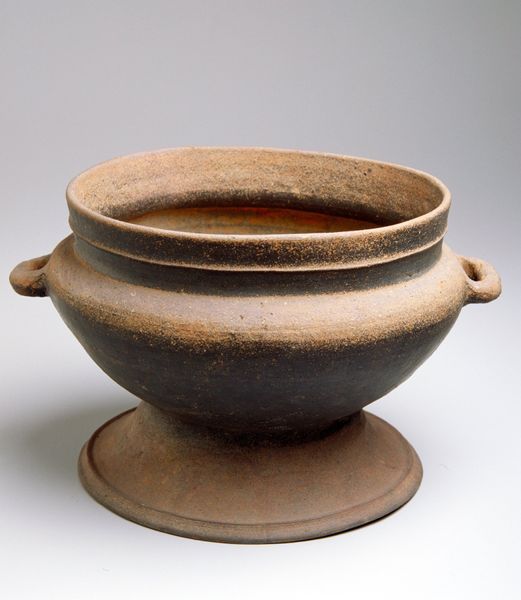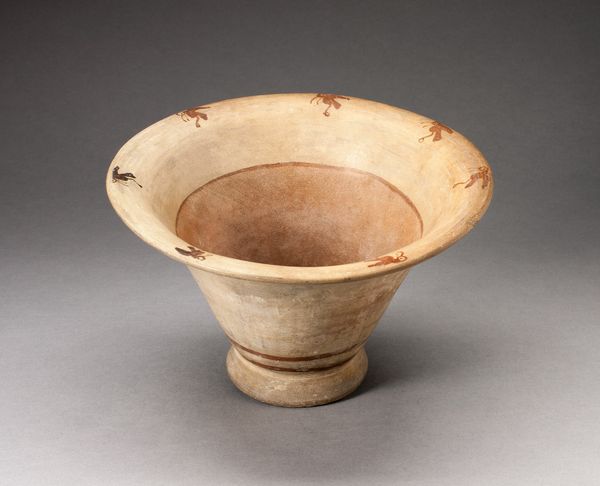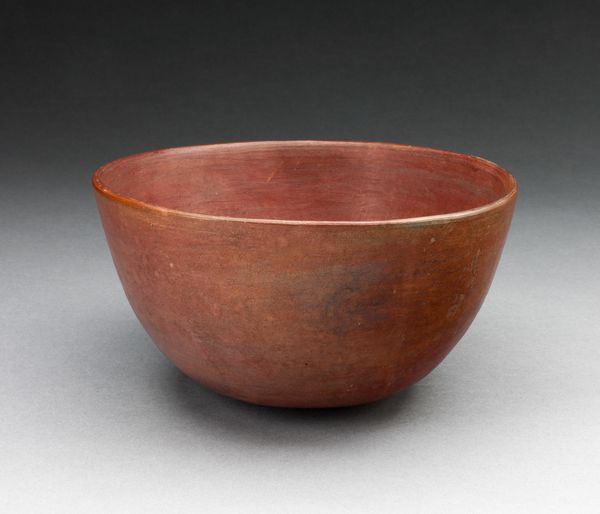
ceramic, earthenware
#
asian-art
#
ceramic
#
abstract
#
earthenware
#
stoneware
#
abstraction
Dimensions: 3 3/8 x 6 1/16 x 6 1/16 in. (8.57 x 15.4 x 15.4 cm)
Copyright: No Known Copyright
Editor: We’re looking at an Okugorai-style tea bowl by Tsujimura Shirō, made in 2000. It seems like a fairly humble ceramic piece, a sort of wabi-sabi aesthetic with the imperfect rim and simple glaze. What's particularly interesting to you about this tea bowl, looking at it from an art history perspective? Curator: Well, it’s precisely that apparent humbleness that fascinates me. On the surface, it appears to embrace imperfection, a key concept in appreciating the Japanese tea ceremony. However, Tsujimura's pieces, while referencing historical styles, also highlight the modern market forces shaping contemporary ceramics. How do we reconcile the artist's intent, referencing centuries of tradition, with its current status as a highly valued commodity? Editor: That’s a great point. It almost feels like it's playing a role, or staging authenticity, knowing it will end up in a museum like the Minneapolis Institute of Art. Does the context change our understanding of its value, separate from its functionality? Curator: Absolutely. Consider the role of museums themselves in conferring value and legitimizing artistic traditions. A piece like this acquires a different kind of aura within these walls. Also, it compels us to think about what aspects of Japanese art are most often spotlighted by institutions in the West. Why this rustic style? Is there an underlying expectation, a craving for a specific representation of Japanese aesthetics? Editor: So, the act of display and curation is almost shaping a narrative of Japanese art in itself, one potentially guided by certain expectations and desires? I never thought about that. Curator: Exactly. It shows how even a seemingly simple object embodies complex dialogues surrounding culture, economics, and institutional power. These stoneware tea bowls weren’t just in the kiln; they were in a larger social crucible too. Editor: It gives me a lot to think about – how we are subtly guided by historical narratives of curation. Thank you!
Comments
No comments
Be the first to comment and join the conversation on the ultimate creative platform.
